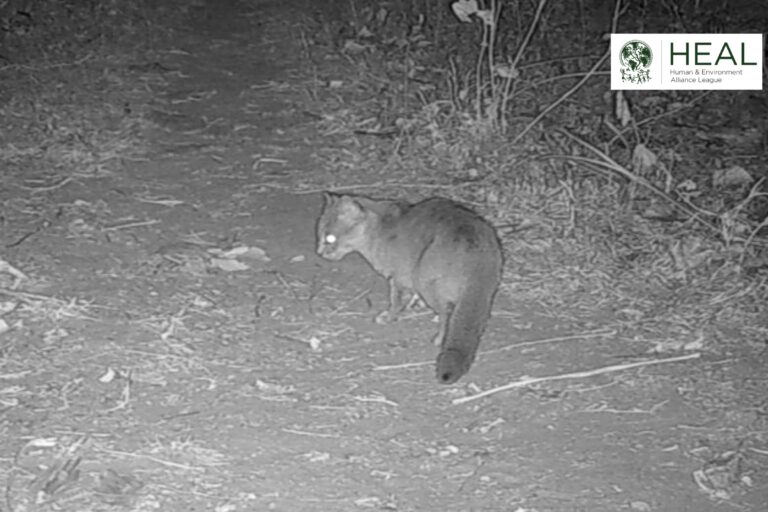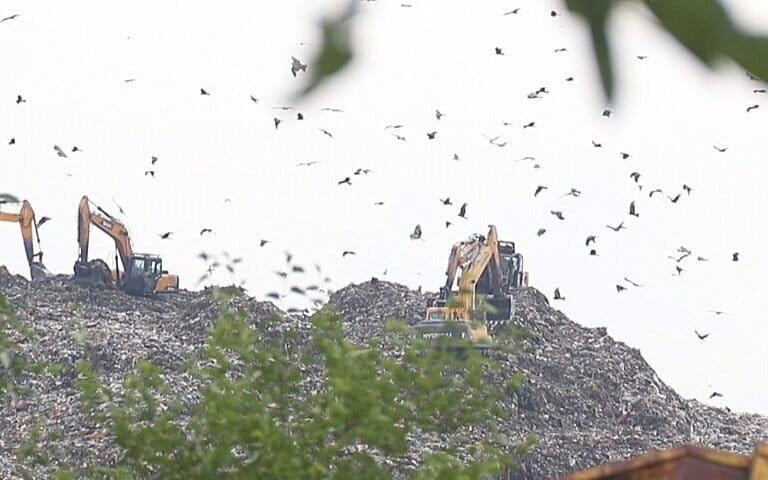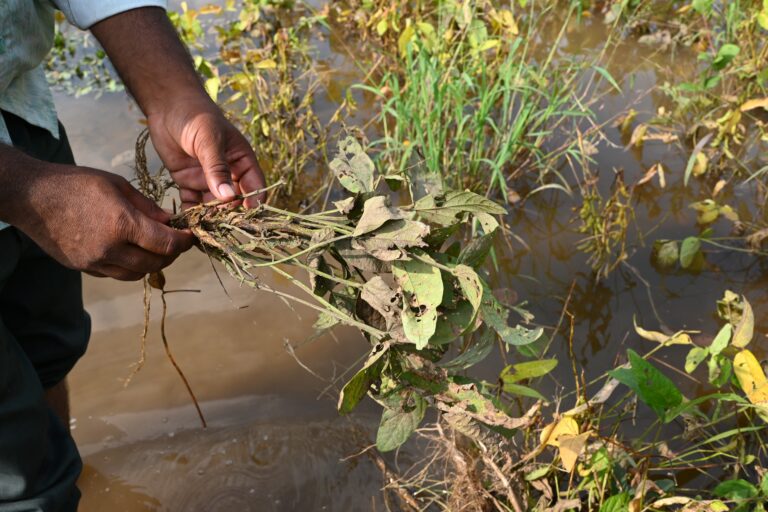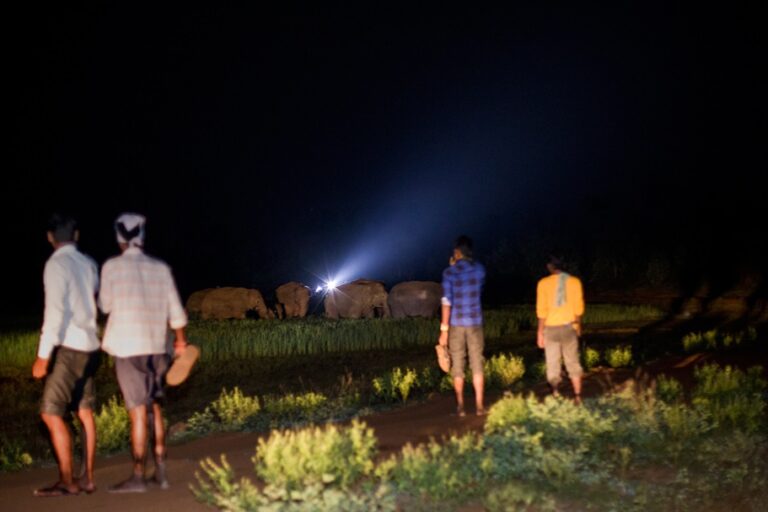- The rusty-spotted cat, known as the world’s smallest wild cat species was spotted for the first time in West Bengal’s Purulia district in January 2025.
- Designated as near threatened by the IUCN, the species is endangered by habitat loss, roadkill incidents and the indiscriminate use of pesticides in agricultural fields.
- Experts believe that the presence of rusty-spotted cats indicates robust health of the forest in Purulia, but note that there are not many focused surveys on the species in India.
The sighting of rusty-spotted cats (Prionailurus rubiginosus), considered one of the world’s smallest wild cat species, in the Purulia district of West Bengal earlier this year has excited both forest officials and environmentalists alike. It is the ninth wild cat species identified in the state.
In January 2025, the cats were photographed by camera traps set up by the Kolkata-based NGO Human and Environment Alliance League (HEAL) as part of another project, supported by the Duleep Matthai Nature Conservation Trust. “The project, initiated in June last year (2024), is an exploratory study to understand the conservation status and threats faced by pangolins in Purulia district. Initially, we installed six camera traps but now we have 17-18 camera traps which we are trying to deploy phase wise in different forest patches of the district,” ecologist Vasudha Mishra of HEAL told Mongabay India.
HEAL shared on social media that the presence of the rusty-spotted cat had not been detected in previous surveys or in British archival data from the region. “The forests of Purulia, where this remarkable sighting took place, fall within the Chotanagpur Plateau ecoregion, which shares ecological characteristics with Jharkhand and Odisha — both states where the rusty-spotted cat has been previously recorded,” stated the post.
Speaking to Mongabay India, Anjan Guha, Divisional Forest Officer (DFO) of Purulia said, “An entire family, including kittens, was spotted by the camera traps which is a very good indicator. We believe that there may be more such cats present in the forests of Purulia.”

Significant discovery
Rusty-spotted cats are found in India, Sri Lanka and Nepal with India harbouring around 80% of the global population of this species. They have been located in the states of Uttar Pradesh, Tamil Nadu, Rajasthan, Uttarakhand (Uttaranchal), Andhra Pradesh, Gujarat, Jammu and Kashmir, Karnataka, Kerala, Madhya Pradesh, Maharashtra and Odisha with West Bengal becoming the new entrant in the list.
An adult rusty-spotted cat weighs between 0.9 and 1.6 kilograms and is lighter than a domestic cat, while a newborn kitten is smaller than a poultry egg.
“Rusty-spotted cats can actually kill animals three times their body weight. They have sharp teeth which can cause deep tissue injury. They are known to raid bird nests and also kill rodents, insects, young hares and snakes,” said Guha.
Shomita Mukherjee, Senior Principal Scientist, Salim Ali Centre for Ornithology and Natural History (SACON) and a global expert on small cat species, confirmed the images were of rusty-spotted cats.
In an email interview with Mongabay India, Mukherjee said that while the discovery of these cats is great news, it is not entirely unexpected. “This species has shown up in so many new locations that were not believed to harbour them. Even today, there are little or no focussed surveys for this cat. But the catch data from camera trap surveys for other species, especially tigers, has provided a lot of information on new presence locations. The species is widely distributed in deciduous and scrub forests in the country,” she said.
She explained that the capture rates on camera traps for this cat are very low, as most camera traps target the larger tiger. “The design of the study (grid size, where the cameras are placed, and so on) influences the success of detection,” she noted.

She said that rusty-spotted cats are found in forests of intermediate canopy cover — dry and wet deciduous forests and also in thorn scrub habitats in Kachchh and other places. “They are also found in agricultural fields adjoining their habitats,” she added.
As per the IUCN, the rusty-spotted cat is near threatened and the population is showing a decreasing trend. “Habitat loss and road kills are a major issue. This is a result of habitat fragmentation by large scale linear developments. Other threats could include indiscriminate use of pesticides in agricultural fields,” said Mukherjee.
Safe forest spaces
Purulia DFO Guha said that the presence of rusty-spotted cats in Purulia indicates robust health of the forest in this district.
“The presence of smaller cats like the rusty-spotted cat suggests that there is a food chain which is being maintained here. This indicates that the jungles in Purulia are in good condition and this might support the presence of big cats like tigers and leopards. We have found the presence of almost half a dozen leopards in Purulia while tigers have come from Simlipal hills in Odisha or from Jharkhand, which shares a border with Purulia,” he says.
Besides the small cats, honey badgers were also spotted for the first time in this district recently. “We have got canid species like hyenas, wolves and jackals,” he noted. “To negate the threat towards these wild carnivores, we are sensitising local people which has brought down incidents of revenge killing in the district while we are also trying to bring down the number of forest fires in Purulia.”
Read more: Jungle cat most widespread, rusty-spotted cat declining, finds national survey
Banner image: A rusty spotted cat. Representative image by David V. Raju via Wikimedia Commons (CC BY-SA 4.0).














